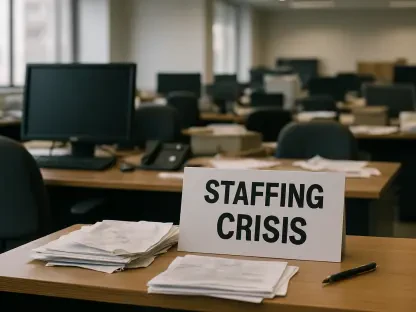Meet Sofia Khaira, a renowned specialist in diversity, equity, and inclusion, who has dedicated her career to transforming workplace cultures and talent management practices. With a deep understanding of HR compliance and a passion for fostering equitable environments, Sofia offers invaluable insights into navigating the evolving legal landscape. In this interview, we explore the implications of a significant U.S. Supreme Court ruling on workplace discrimination, strategies for updating HR policies, the role of technology in hiring, and the future of inclusive initiatives. Join us as we dive into how employers can balance fairness and inclusion in today’s complex environment.
Can you walk us through the significance of the recent Supreme Court ruling in Ames v. Ohio Department of Youth Services for both employers and employees?
Absolutely. The Ames decision is a game-changer because it strikes down the “background circumstances” rule, which previously required members of majority groups to meet a higher evidentiary standard to prove discrimination under Title VII of the Civil Rights Act. Essentially, the Court reaffirmed that Title VII protects everyone equally, regardless of demographic background. For employers, this means a potential increase in reverse discrimination claims, as the legal barrier for majority groups to file such lawsuits has been lowered. For employees, it levels the playing field, ensuring that anyone can seek protection under the law if they feel discriminated against based on their protected characteristics.
Why do you think this ruling might lead to a rise in reverse discrimination lawsuits?
The removal of that heightened standard makes it easier for individuals from majority groups to bring claims forward, as they no longer need to prove additional contextual factors to make their case. I think we’ll see more lawsuits in industries with competitive hiring or promotion practices, like tech or finance, where perceptions of unfairness can already run high. Cultural shifts and heightened awareness of fairness in the workplace also play a role—people are more vocal now about perceived bias, no matter who it affects. This puts pressure on HR to be proactive in addressing these concerns before they escalate.
What are some practical first steps HR leaders should take to align their policies with this new legal landscape?
The first step is to conduct a thorough review of equal employment opportunity and anti-harassment policies. These should explicitly state that they apply to all employees equally and that no employment decision will be based on protected characteristics. Beyond that, documentation is critical—HR needs to maintain detailed records of hiring, promotions, terminations, and employee evaluations to demonstrate fairness. Starting now, if there are gaps in record-keeping, it’s time to tighten up those processes to protect the organization from potential legal challenges.
You’ve emphasized the importance of applying policies uniformly. Can you explain what that looks like in a real-world setting?
Uniform application means ensuring that every employee, regardless of background, goes through the same processes for hiring, discipline, or promotions. For example, if a performance review leads to a promotion, the criteria used—say, sales targets or project outcomes—should be the same for everyone in that role. HR can achieve this by standardizing decision-making frameworks and training managers to follow them consistently. This reduces the risk of subjective bias creeping in and helps build trust that the system is fair across the board.
Let’s shift gears to technology. What should employers be cautious about when using generative AI in hiring processes?
Generative AI can be a powerful tool, but it’s not without risks. One major concern is that AI systems can unintentionally perpetuate bias if they’re trained on historical data that reflects past inequalities—like favoring certain demographics for roles based on outdated hiring patterns. Employers need to understand how these tools make decisions and ensure there’s always human oversight to catch potential issues. Clear policies on AI use, regular audits of outcomes, and transparency with candidates about how technology factors into decisions are all essential to minimize discrimination risks.
How should companies approach their diversity, equity, and inclusion programs in light of this ruling?
DEI programs are still vital, but the Ames decision means companies need to be mindful of how they’re framed. The focus should be on fairness and opportunity for everyone, avoiding language that might suggest preference for one group over another. For instance, instead of targeting specific demographics for advancement, programs should emphasize creating pathways for all underrepresented talent. It’s not about scaling back DEI but refining the messaging and approach to ensure it’s inclusive in the truest sense, aligning with legal expectations.
What changes would you recommend for workplace training programs, like anti-harassment sessions, following this decision?
Training programs need to underscore that discrimination against any group, including historically advantaged ones, is unlawful and unacceptable. HR should update content to explicitly address reverse discrimination and ensure scenarios or examples used in training are balanced, representing a variety of perspectives. It’s also a good idea to reinforce the company’s commitment to equal treatment and provide clear guidance on how employees can raise concerns. This helps set the tone that fairness applies universally and equips staff to navigate these issues sensitively.
Looking ahead, what is your forecast for the impact of reverse discrimination claims on workplace culture and HR practices?
I anticipate that reverse discrimination claims will continue to shape how companies approach workplace policies and culture over the next few years. We’re likely to see HR teams investing more in proactive measures—like enhanced training, policy audits, and complaint resolution processes—to prevent issues from escalating into lawsuits. There may also be a cultural shift toward greater transparency in decision-making to rebuild trust across diverse workforces. While this presents challenges, it’s also an opportunity for organizations to double down on creating truly equitable environments where every employee feels valued and protected.









